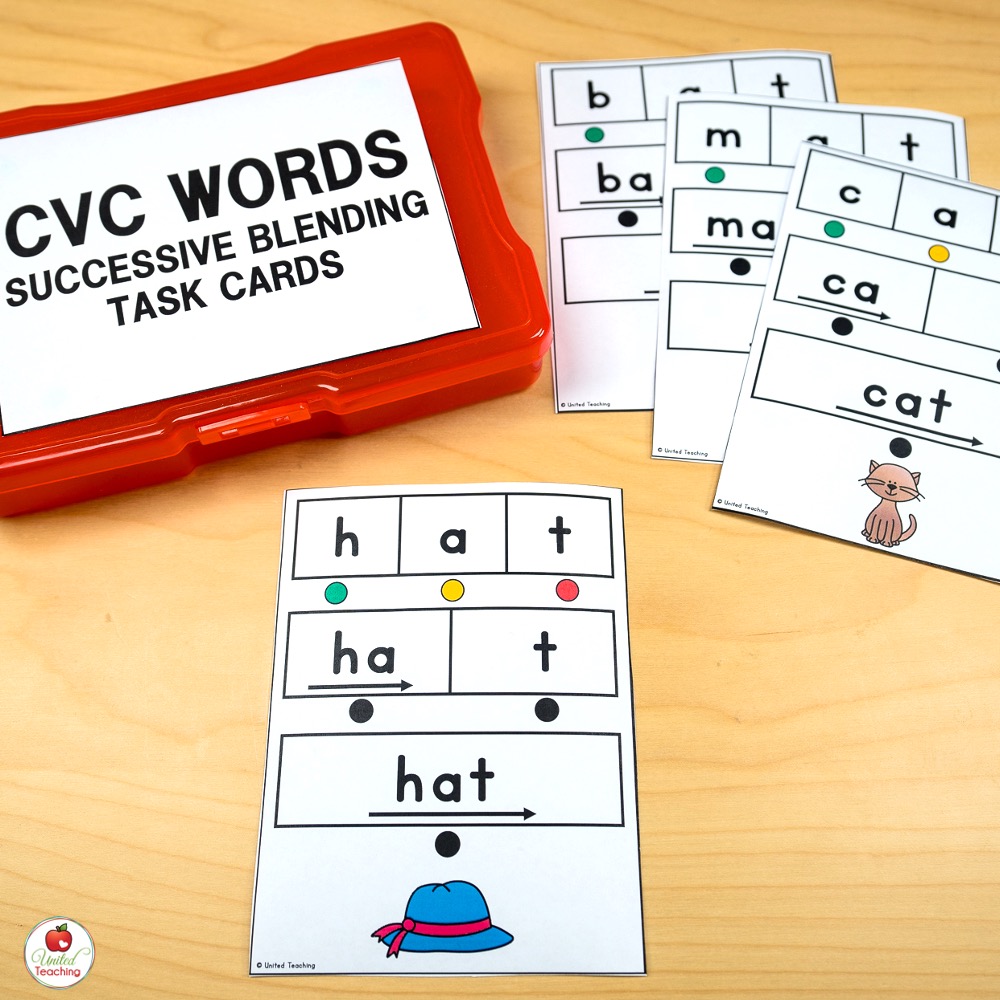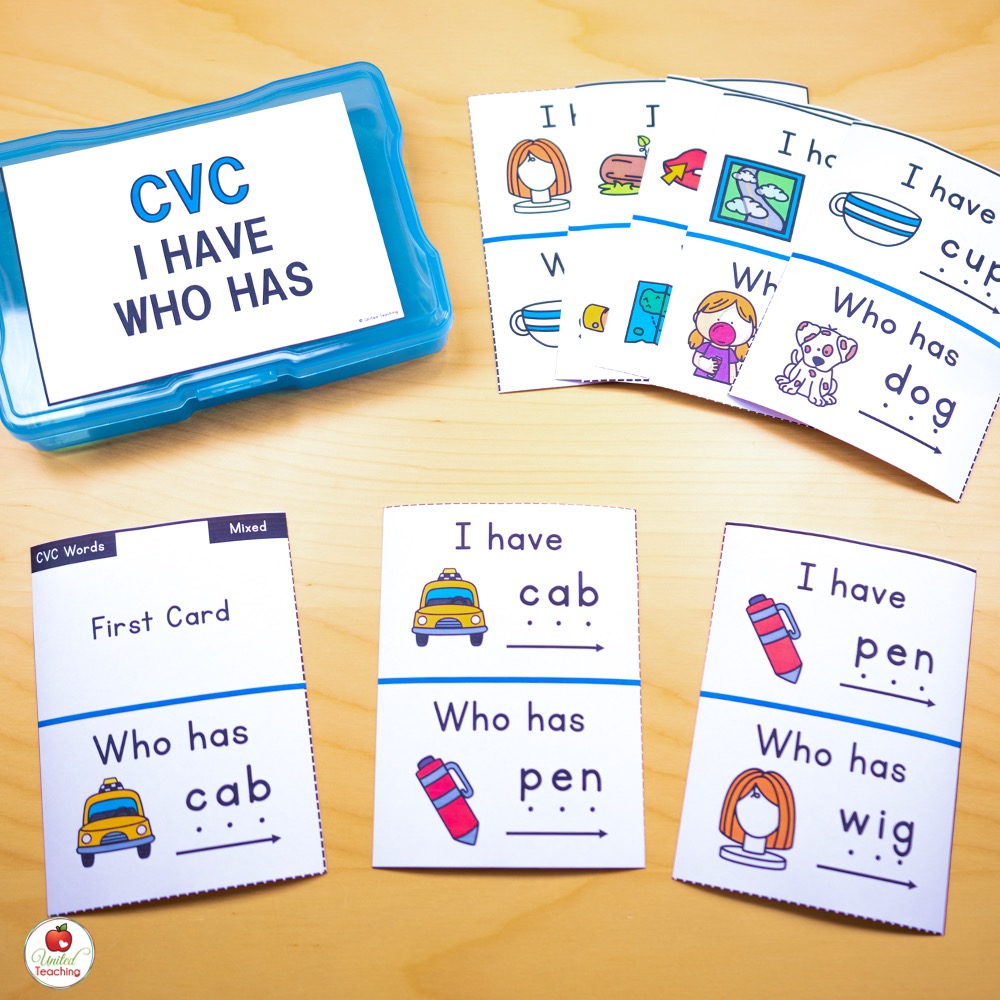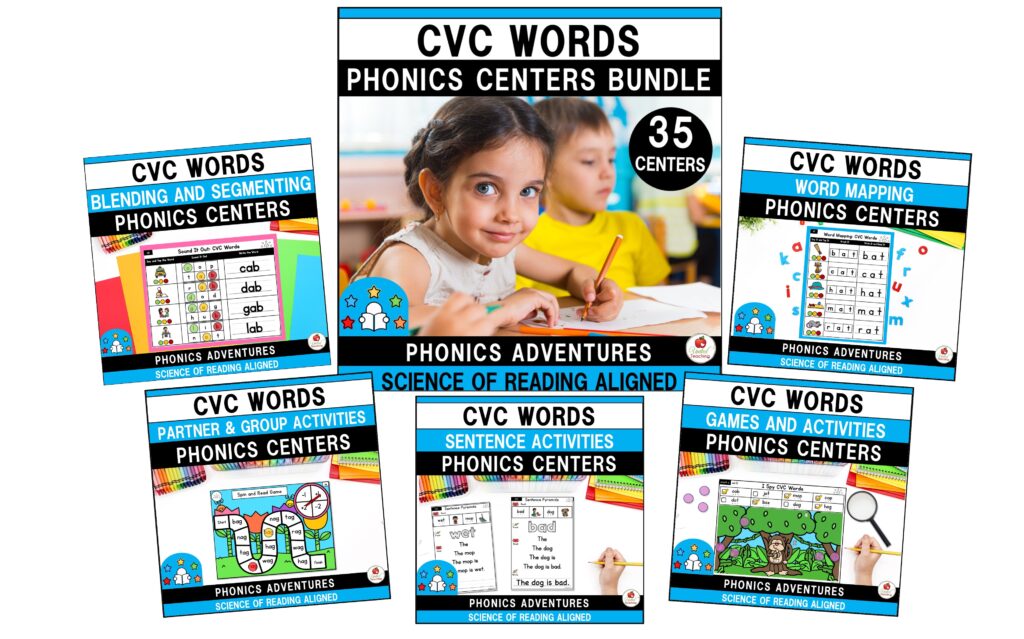Have you ever been amazed at how jumbled letters turn into meaningful words? Blending and segmenting words are the magical skills behind this transformation. Kindergarten students who master blending and segmenting words gain the ability to decode and understand written language, forming a strong foundation for reading and writing. In this blog post, we will explore the practical and effective ways to teach blending and segmenting words to kindergartners. We will discuss the importance of these skills, provide actionable ideas, easy-to-implement strategies, and practical activities for your classroom.

The Importance of Teaching Blending and Segmenting Words
Blending and segmenting words are crucial skills that lay the foundation for phonemic awareness, reading, and spelling in kindergarten. By blending sounds together, students learn to recognize and produce words, developing phonemic awareness. Segmenting words helps students identify and isolate individual sounds within a word, which is essential for decoding unfamiliar words, recognizing patterns, and comprehending texts. These skills also deepen students’ understanding of phonics, enhancing their reading and spelling abilities.
The Difference Between Blending And Segmenting Words
In word reading, blending is the process that involves combining individual sounds to form a complete word. Students smoothly transition from one sound to the next, merging them to pronounce the word correctly. For example, blending the sounds /c/ /a/ /t/ results in the word “cat.” Blending enables accurate word decoding.
Segmenting, on the other hand, means breaking down a word into its individual sounds or phonemes. Kindergarten students identify and isolate separate sounds within a word, like /d/ /o/ /g/ for the word “dog.” Segmenting helps students grasp the phonemic structure of words, supporting spelling and sound manipulation skills.
Let’s delve into some examples and visuals to help readers understand these concepts. Imagine the word “sun.” When blending, students identify the sounds /s/ /u/ /n/ and smoothly blend them together to pronounce “sun.” Visual aids such as letter tiles or sound boxes can represent each sound, allowing students to physically manipulate them as they blend.
For segmenting, consider the word “book.” Students break it down into the sounds /b/ /oo/ /k/. Visuals like dots or lines can represent each sound segment. Students touch or tap each dot or line while saying the corresponding sound aloud, reinforcing the concept of segmenting.
Teaching Order: Blending or Segmenting First?
The teaching order of blending and segmenting may vary based on students’ needs and readiness. However, it is generally recommended to start with segmenting before introducing blending.
Segmenting helps students understand individual sounds in words, which is crucial for decoding and spelling. By breaking down words, students recognize and manipulate phonemes, setting the stage for blending.
Once students grasp segmenting and feel comfortable with identifying individual sounds, introduce blending. Provide explicit instruction and gradually increase the complexity of words as students become more proficient.
How do you teach blending and segmenting?
To effectively teach blending and segmenting words, it is helpful to break down the teaching process into simple steps.
Here are some simple strategies to teach blending and segmenting at the phoneme level in kindergarten:
- Start with two-phoneme words like “it” or “up” to introduce blending and segmenting.
- Focus on continuous sounds that can be held briefly without distorting, such as “ssssuuunnn” for “sun.”
- Gradually introduce stop sounds like “t” or “b,” making sure students articulate them clearly.
- Progress to three-phoneme words, starting with continuous sounds like “sun” before tackling words with stop sounds like “top.”
- Encourage students to transition from saying each sound individually to smoothly blending them, such as going from “b-a-t” to “bat.”
Support these activities with visual aids like Elkonin boxes or manipulatives, but remember that the goal is to associate sounds with letters.
Blending and Segmenting Activities
Begin with Phonemic Awareness Skills and Activities
Before introducing blending and segmenting, ensure that students have a strong foundation in phonemic awareness. Engage them in phonemic awareness activities that focus on recognizing and manipulating individual sounds in words.
CVC Missing Sounds Task Cards
An effective approach to reinforce phonemic awareness is through the use of task cards focusing on identifying the beginning, middle, and ending sounds of CVC words. The CVC Missing Sounds task cards present students with a range of CVC words that prompt them to identify the specific missing sound within each word. For instance, students may be asked to identify the beginning sound of “cat” or the ending sound of “dog.” By actively engaging in this task card activity, students will strengthen their ability to isolate and distinguish individual sounds in words.

Change the Sound Task Cards
Another engaging activity that promotes phonemic awareness is the use of “Change the Sound” task cards. These task cards provide students with CVC words and instruct them to change one specific sound to create a new word. For example, students might be given the word “cat” and asked to change the vowel sound to create the word “cut.” This activity challenges students to manipulate individual sounds within words, practice blending phonemes, and helps them develop a deeper understanding of phonemic structure. By working with “Change the Sound” task cards, students actively engage in phonemic awareness exercises as they identify, substitute, and blend individual sounds to create new words.

CVC Word Ladders
In addition to the CVC Missing Sounds Task Cards and Change the Sound Task Cards, an activity that promotes phonemic awareness and supports blending and segmenting skills is the use of word ladders. Word ladders are a series of simple words that are connected by changing one letter at a time to create new words. This activity challenges students to manipulate individual sounds and letters to form new words, strengthening their phonemic awareness and phonics abilities.

Secret Words Task Cards
Secret CVC Words task cards offer a fun and interactive way to reinforce all phonemic awareness skills while integrating blending and segmenting skills. In this activity, students are presented with pictures representing the initial, medial, and final sound of the word. Students identify the beginning sound for each picture to find the letters for the CVC word. Then, students read the CVC word and find the matching picture.

Explicitly Teach the Concepts
Introduce the terms “blending” and “segmenting” to students, explaining their meanings and purposes. Use clear and concise language to describe each concept, providing real-life examples and visual aids to enhance understanding.
Successive Blending Cards and Strips
A valuable tool for explicitly teaching the concepts of blending and segmenting in a systematic and structured manner are successive blending cards . These cards provide a step-by-step approach to guide students through the process of blending continuous sounds together to form words.

For example, with the successive blending strips, students are presented with a single letter or phoneme. They start by focusing on the initial sound in the word. Students say the sound and as they progress through the strip, they blend each new sound with the previous ones to create a whole word. This sequential blending approach allows students to develop a clear understanding of how individual sounds come together to form words.

Map the Sounds Task Cards
Map the sound task cards are a valuable resource for practicing and reinforcing oral segmenting skills in phonemic awareness instruction. These task cards provide students with opportunities to break down words into their individual sounds or phonemes, allowing them to strengthen their ability to segment words accurately.
Map the sound task cards offer a structured and focused approach to oral segmenting, allowing students to practice this skill in a systematic manner. It helps them build phonemic awareness by promoting sound discrimination, phoneme isolation, and phonological manipulation.
When using Map the sound task cards, students are presented with a word on each card. Their task is to orally segment the word by identifying and articulating each individual sound or phoneme. They use counters to physically touch as they map each sound and say it aloud, reinforcing the concept of segmenting.

Word Mapping Task Cards
Once students can orally segment a word using the Map the Sounds Task Cards, they can progress to the Word Mapping Task Cards. When using word mapping task cards, students are presented with a word on each card. The word is represented by boxes, with each box representing a sound or phoneme. Students are then prompted to segment the word by placing writing the letters in the corresponding box for each sound they hear.

This activity helps students develop their segmenting skills by visually mapping out the individual sounds within a word. It encourages them to break down words into their component sounds and reinforces the concept of phoneme isolation and manipulation.

Model and Demonstrate
Show students how to blend and segment words by thinking aloud and demonstrating the process step-by-step. Use both oral blending and segmenting and visual cues to support their learning.
Read and Write Phonics Task Cards
These Read and Write task cards include dots and arrows to guide blending making them a powerful tool for modeling and demonstrating blending and segmenting to kindergarten students. These task cards provide a visual scaffold that supports students in understanding how individual sounds come together to form words.
When using these task cards, teachers can begin by selecting a card and displaying it to the class. They can then guide the students through the process of blending the sounds represented by the dots and arrows. By following the path indicated by the arrows and saying each sound aloud, students can practice smoothly transitioning from one sound to the next, ultimately blending them together to pronounce the word.
Additionally, the dots and arrows on the task cards can also be used to model and demonstrate segmenting. Instead of blending the sounds together, the teacher can guide the students in touching or pointing to each dot or arrow while saying the corresponding sound. This helps students recognize and isolate the individual sounds within the word, reinforcing the concept of segmenting.

Provide Guided Practice
Offer structured opportunities for students to practice blending and segmenting skills. Provide prompts, feedback, and guidance as needed. Gradually increase the difficulty level as students become more proficient and incorporate blending and segmenting games and activities to reinforce skills.
I Have Who Has Phonics Games
The game “I Have, Who Has” is an excellent activity to enhance students’ segmenting and blending skills, particularly as the cards employ dots for sound blending assistance. This game actively engages students in listening, segmenting, and blending skills while promoting collaboration and active participation.

Spin and Map the Word Task Cards
An additional engaging activity to reinforce segmenting and blending skills is “Spin and Map the Word” task cards. This activity involves spinning a spinner to select a word and then mapping out the individual sounds in the word. The “Spin and Map the Sounds in a Word” task cards provide an interactive and tactile approach to reinforce segmenting and blending skills, making the learning process enjoyable and effective.

More Resources to Teach Blending and Segmenting
For a comprehensive resource to help with teaching blending and segmenting CVC Words, check out the CVC Phonics Centers Bundle. This Science of Reading aligned resource includes a variety of materials and activities to support the instruction of blending and segmenting in a comprehensive way. The CVC Phonics Centers Bundle provides a systematic and scaffolded approach to teaching these essential skills, ensuring that students develop a strong foundation in phonemic awareness and decoding.


For hands on task cards check out the Phonics Task Cards Bundle.

Teaching students blending and segmenting words in kindergarten plays a crucial role in building a strong foundation for learning to read and phonemic awareness. By understanding the importance of these skills, implementing clear explanations, providing visual examples, and utilizing effective teaching strategies and activities, you can support your students’ learning journey effectively. With your guidance, kindergartners will acquire the essential abilities to decode words, read fluently, and build confidence in their early reading and writing endeavors.
Pin for Later




